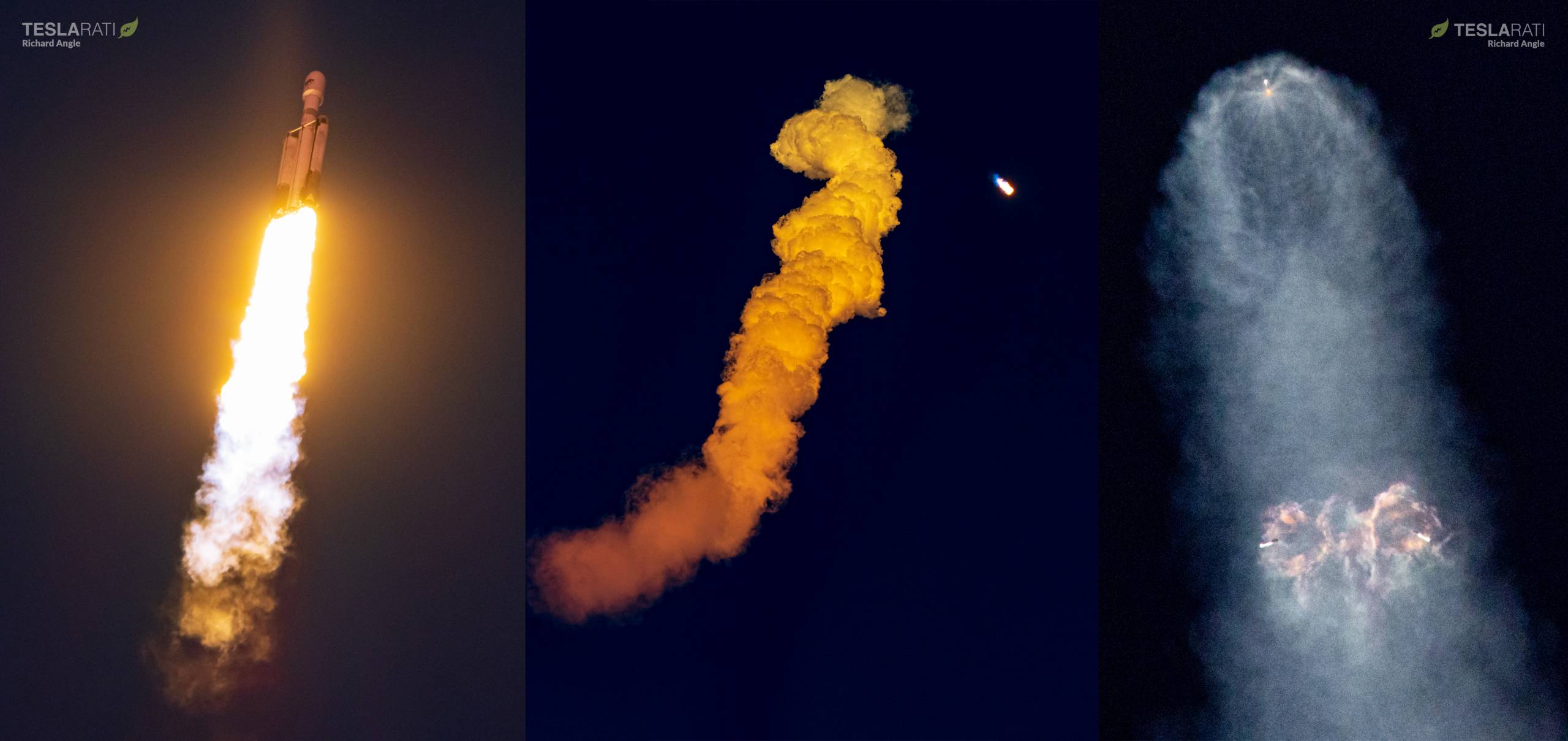

News
SpaceX Falcon Heavy rocket kicks off fifth mission with most spectacular launch yet
SpaceX’s fifth Falcon Heavy lifted off shortly after sunset on the US Space Force’s USSF-67 mission, producing one of the massive commercial rocket’s most spectacular launches yet.
Powered by three Falcon 9-derived boosters, each with nine Merlin 1D engines, Falcon Heavy fired up and soared off of SpaceX’s Kennedy Space Center LC-39A pad at the start of its Sunday launch window. Producing up to 2326 tons (5.13 million lbf) of thrust shortly after liftoff, Falcon Heavy upheld its position as the world’s most powerful commercial rocket and the second most powerful operational rocket.
USSF-67 largely mirrored SpaceX’s November 1st, 2022 USSF-44 Falcon Heavy launch, and even used the same side boosters. Flying for the second time in 75 days, B1064 and B1065 aced their roles in the mission and separated from Falcon Heavy’s expendable center booster (or core) around three minutes after liftoff. The side boosters immediately flipped around with thrusters powered by compressed nitrogen gas and ignited three of their nine Merlin 1D engines to boost back to the Florida coast. After coasting back to Florida, they completed brief reentry burns to lessen atmospheric heating and fired up one last time to gently touch down at SpaceX’s LZ-1 and LZ-2 landing pads.
The update that's rolling out to the fleet makes full use of the front and rear steering travel to minimize turning circle. In this case a reduction of 1.6 feet just over the air— Wes (@wmorrill3) April 16, 2024
Another mysterious military mission
Because Falcon Heavy lifted off after sunset, local skies were dark and the rocket quickly climbed back into daylight, creating spectacular contrast between twilight and the bright rocket exhaust. When Falcon Heavy’s side boosters flipped around and reignited, their high-velocity exhaust plumes slammed into the center core’s opposing plume, producing spectacular interactions and a nebula-like cloud that caught even more of the daylight. Had Falcon Heavy lifted off just a handful of minutes later, a darker sky could have made for an even more incredible ‘nebula’ or ‘jellyfish’, but the rocket’s first twilight launch was still spectacular.
After both side boosters touched down, SpaceX ended its live coverage at the request of the Space Force, reiterating the mission’s secretive customer and nature. Compared to USSF-44, the USSF hasn’t confirmed much about the USSF-67 mission’s payloads, but Falcon Heavy is known to be carrying a geostationary communications relay satellite called CBAS-2 and likely built by Boeing.
CBAS-2 is joined by Northrop Grumman’s third Long Duration Propulsive EELV or LDPE-3A, a combination of a propulsive kick stage and a satellite. LDPE-3A is carrying a collection of rideshare satellites and payloads and is designed to operate for months in orbit. Using USSF-44 as a guide, the total USSF-67 payload could weigh roughly 3.75 to 4.75 tons (8,250-10,500 lb).

Climbing to GSO
While small compared to ordinary payloads, Falcon Heavy is launching USSF-67 directly to a geosynchronous orbit. Direct-to-GEO/GSO launches are exceptionally challenging for the rocket. Falcon Heavy must first sacrifice one of its three boosters just to ensure the Falcon upper stage is traveling fast enough and has enough propellant to spare when it separates. The upper stage must then conduct at least three or four burns.
The first burn likely carried the upper stage and USSF-67 payload into a parking orbit around 300 kilometers (~185 mi) above Earth’s surface. A second burn of the upper stage’s Merlin Vacuum engine will lift the pair into a geosynchronous transfer orbit (GTO) with the low end still around 300 kilometers but the high end around 35,800 kilometers (~22,250 mi). Finally, the upper stage must survive a roughly five-hour coast to that apogee. During that coast, the rocket must survive passes through both of Earth’s harsh radiation belts and maintain perfect control of its orientation and tank pressures to keep its refined kerosene fuel from freezing, its cryogenic liquid oxygen (LOx) from boiling away, and itself from bursting as its propellant warms and expands.
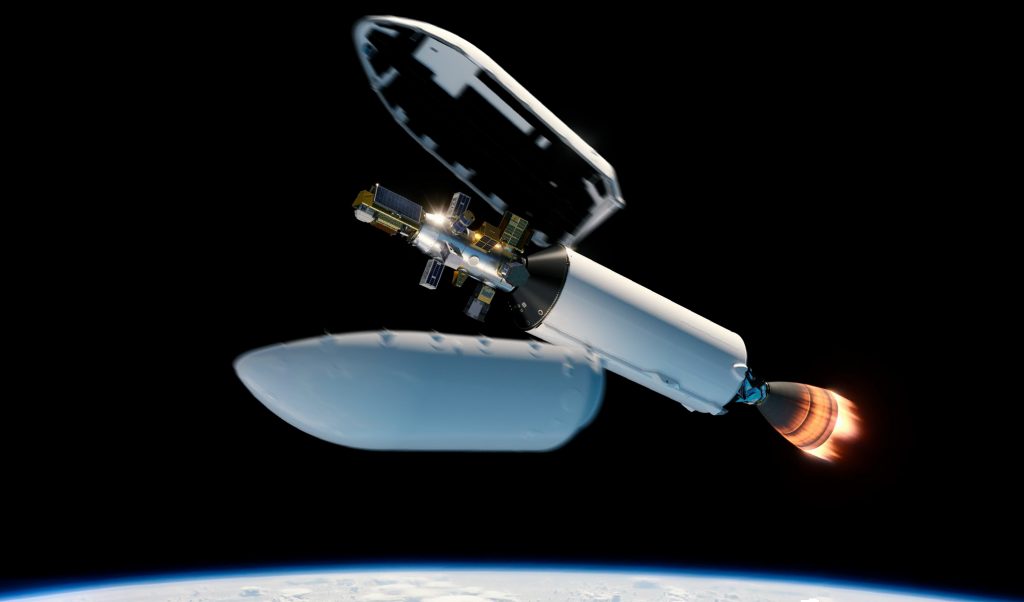
If it does all of those things right, the upper stage will be able to complete a circularization burn at apogee and deploy its CBAS-2 and LPDE-3A payloads directly into geosynchronous orbit (~35,786 x ~35,786 km). At GSO, satellites orbit at the same speed as Earth spins, allowing them to indefinitely hover over the same region of the planet, making it useful for Earth observation, surveillance, and communications. Finally, the Falcon upper stage will attempt to complete one last burn to send itself into a graveyard orbit just above GSO, where it will eventually run out of power and lose control.
It will take around 6-8 hours after liftoff before SpaceX or the USSF can confirm if the mission was a success. Rewatch SpaceX’s fifth Falcon Heavy launch and dual booster landing here.
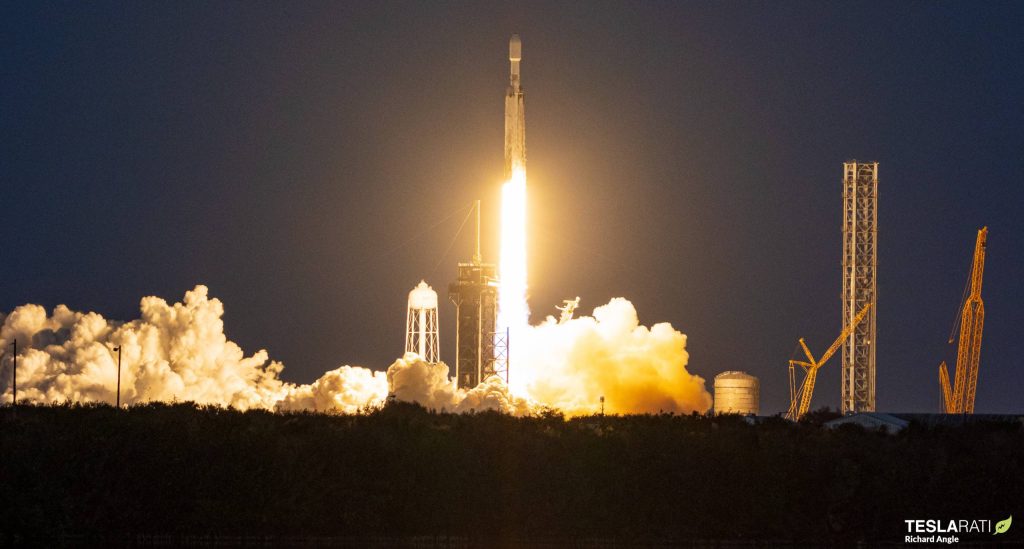

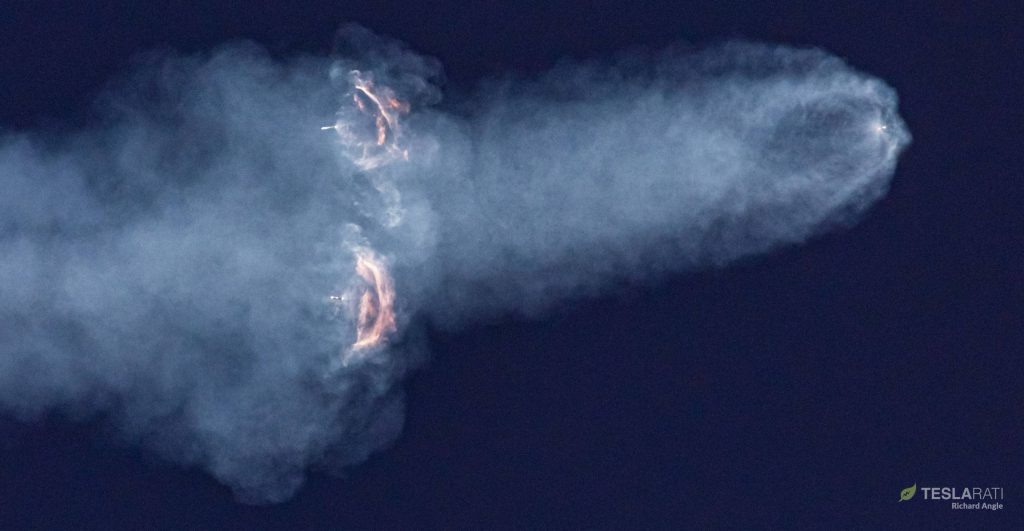
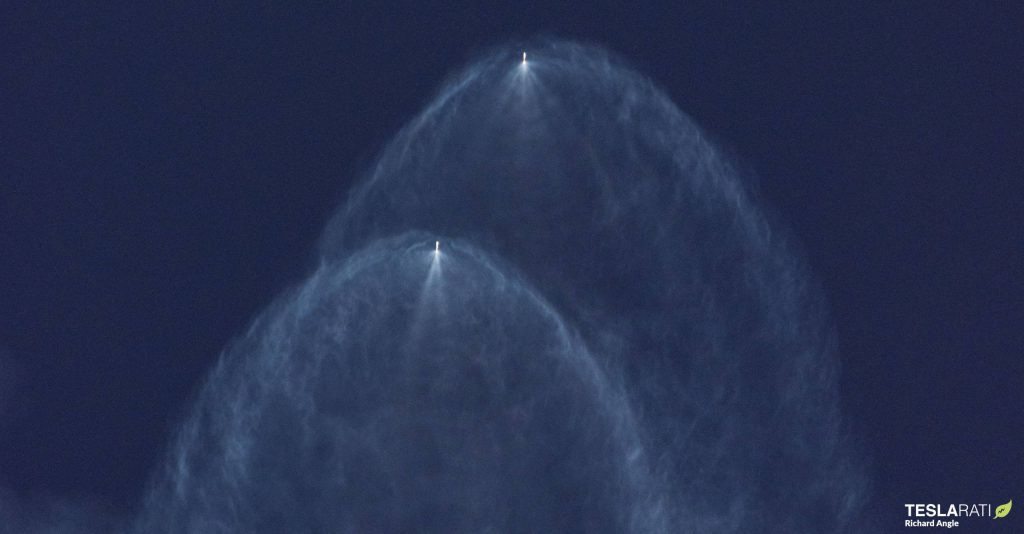
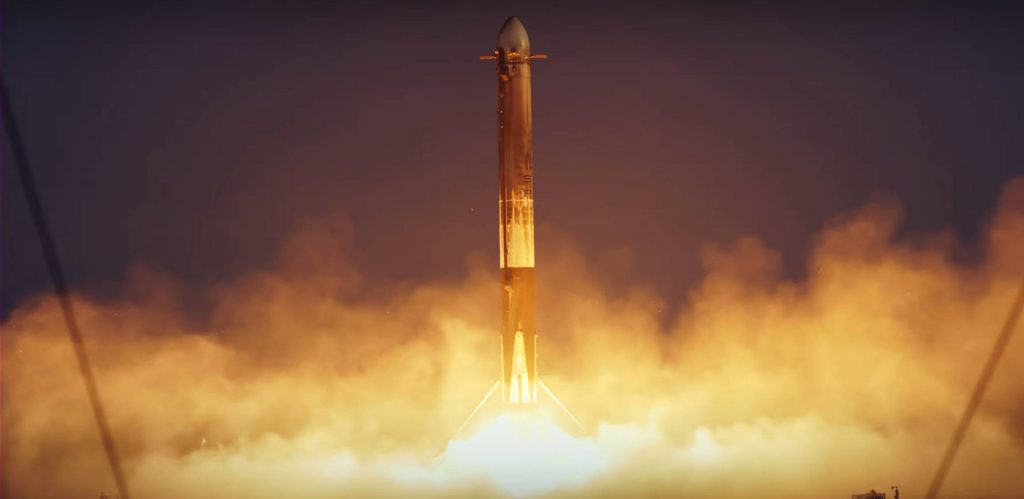
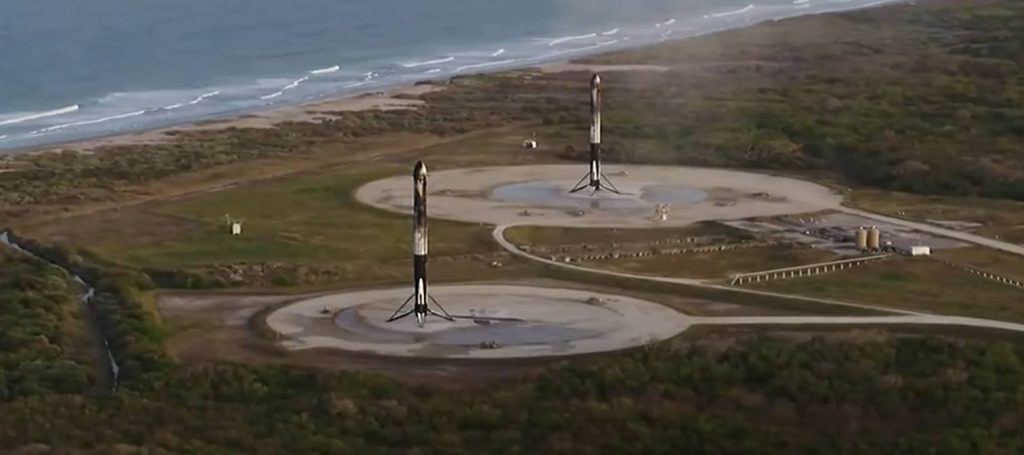
News
Tesla UK sales see 14% year-over-year rebound in June: SMMT data
The SMMT stated that Tesla sales grew 14% year-over-year to 7,719 units in June 2025.

Tesla’s sales in the United Kingdom rose in June, climbing 14% year-over-year to 7,719 units, as per data from the Society of Motor Manufacturers and Traders (SMMT). The spike in the company’s sales coincided with the first deliveries of the updated Model Y last month.
Model Y deliveries support Tesla’s UK recovery
Tesla’s June performance marked one of its strongest months in the UK so far this year, with new Model Y deliveries contributing significantly to the company’s momentum.
While the SMMT listed Tesla with 7,719 deliveries in June, independent data from New AutoMotive suggested that the electric vehicle maker registered 7,891 units during the month instead. However, year-to-date figures for Tesla remain 2% down compared to 2024, as per a report from Reuters.
While Tesla made a strong showing in June, rivals are also growing. Chinese automaker BYD saw UK sales rise nearly fourfold to 2,498 units, while Ford posted the highest EV growth among major automakers, with a more than fourfold increase in the first half of 2025.
Overall, the UK’s battery electric vehicle (BEV) demand surged 39% to to 47,354 units last month, helping push total new car sales in the UK to 191,316 units, up 6.7% from the same period in 2024.
EV adoption accelerates, but concerns linger
June marked the best month for UK car sales since 2019, though the SMMT cautioned that growth in the electric vehicle sector remains heavily dependent on discounting and support programs. Still, one in four new vehicle buyers in June chose a battery electric vehicle.
SMMT Chief Executive Mike Hawes noted that despite strong BEV demand, sales levels are still below regulatory targets. “Further growth in sales, and the sector will rely on increased and improved charging facilities to boost mainstream electric vehicle adoption,” Hawes stated.
Also taking effect this week was a new US-UK trade deal, which lowers tariffs on UK car exports to the United States from 27.5% to 10%. The agreement could benefit UK-based EV producers aiming to expand across the country.
News
Tesla Model 3 ranks as the safest new car in Europe for 2025, per Euro NCAP tests
Despite being on the market longer than many of its rivals, the Tesla Model 3 continues to set the bar for vehicle safety.

The Tesla Model 3 has been named the safest new car on sale in 2025, according to the latest results from the Euro NCAP. Among 20 newly tested vehicles, the Model 3 emerged at the top of the list, scoring an impressive 359 out of 400 possible points across all major safety categories.
Tesla Model 3’s safety systems
Despite being on the market longer than many of its rivals, the Tesla Model 3 continues to set the bar for vehicle safety. Under Euro NCAP’s stricter 2025 testing protocols, the electric sedan earned 90% for adult occupant protection, 93% for child occupant protection, 89% for pedestrian protection, and 87% for its Safety Assist systems.
The updated Model 3 received particular praise for its advanced driver assistance features, including Tesla’s autonomous emergency braking (AEB) system, which performed well across various test scenarios. Its Intelligent Speed Assistance and child presence detection system were cited as noteworthy features as well, as per a WhatCar report.
Other notable safety features include the Model 3’s pedestrian-friendly pop-up hood and robust crash protection for both front and side collisions. Euro NCAP also highlighted the Model 3’s ability to detect vulnerable road users during complex maneuvers, such as turning across oncoming traffic.
Euro NCAP’s Autopilot caution
While the Model 3’s safety scores were impressive across the board, Euro NCAP did raise concerns about driver expectations of Tesla’s Autopilot system. The organization warned that some owners may overestimate the system’s capabilities, potentially leading to misuse or inattention behind the wheel. Even so, the Model 3 remained the highest-scoring vehicle tested under Euro NCAP’s updated criteria this year.
The Euro NCAP’s concerns are also quite interesting because Tesla’s Full Self-Driving (FSD) Supervised, which is arguably the company’s most robust safety suite, is not allowed for public rollout in Europe yet. FSD Supervised would allow the Model 3 to navigate inner city streets with only minimal human supervision.
Other top scorers included the Volkswagen ID.7, Polestar 3, and Geely EX5, but none matched the Model 3’s total score or consistency across categories. A total of 14 out of 20 newly tested cars earned five stars, while several models, including the Kia EV3, MG ZS, and Renault 5, fell short of the top rating.
Elon Musk
Why Tesla’s Q3 could be one of its biggest quarters in history
Tesla could stand to benefit from the removal of the $7,500 EV tax credit at the end of Q3.

Tesla has gotten off to a slow start in 2025, as the first half of the year has not been one to remember from a delivery perspective.
However, Q3 could end up being one of the best the company has had in history, with the United States potentially being a major contributor to what might reverse a slow start to the year.
Earlier today, the United States’ House of Representatives officially passed President Trump’s “Big Beautiful Bill,” after it made its way through the Senate earlier this week. The bill will head to President Trump, as he looks to sign it before his July 4 deadline.
The Bill will effectively bring closure to the $7,500 EV tax credit, which will end on September 30, 2025. This means, over the next three months in the United States, those who are looking to buy an EV will have their last chance to take advantage of the credit. EVs will then be, for most people, $7,500 more expensive, in essence.
The tax credit is available to any single filer who makes under $150,000 per year, $225,000 a year to a head of household, and $300,000 to couples filing jointly.
Ending the tax credit was expected with the Trump administration, as his policies have leaned significantly toward reliance on fossil fuels, ending what he calls an “EV mandate.” He has used this phrase several times in disagreements with Tesla CEO Elon Musk.
Nevertheless, those who have been on the fence about buying a Tesla, or any EV, for that matter, will have some decisions to make in the next three months. While all companies will stand to benefit from this time crunch, Tesla could be the true winner because of its sheer volume.
If things are done correctly, meaning if Tesla can also offer incentives like 0% APR, special pricing on leasing or financing, or other advantages (like free Red, White, and Blue for a short period of time in celebration of Independence Day), it could see some real volume in sales this quarter.
You can now buy a Tesla in Red, White, and Blue for free until July 14 https://t.co/iAwhaRFOH0
— TESLARATI (@Teslarati) July 3, 2025
Tesla is just a shade under 721,000 deliveries for the year, so it’s on pace for roughly 1.4 million for 2025. This would be a decrease from the 1.8 million cars it delivered in each of the last two years. Traditionally, the second half of the year has produced Tesla’s strongest quarters. Its top three quarters in terms of deliveries are Q4 2024 with 495,570 vehicles, Q4 2023 with 484,507 vehicles, and Q3 2024 with 462,890 vehicles.
-

 Elon Musk4 days ago
Elon Musk4 days agoTesla investors will be shocked by Jim Cramer’s latest assessment
-

 News1 week ago
News1 week agoTesla Robotaxi’s biggest challenge seems to be this one thing
-

 Elon Musk2 weeks ago
Elon Musk2 weeks agoFirst Look at Tesla’s Robotaxi App: features, design, and more
-

 News2 weeks ago
News2 weeks agoSpaceX and Elon Musk share insights on Starship Ship 36’s RUD
-

 News2 weeks ago
News2 weeks agoWatch Tesla’s first driverless public Robotaxi rides in Texas
-

 News1 week ago
News1 week agoWatch the first true Tesla Robotaxi intervention by safety monitor
-

 News2 weeks ago
News2 weeks agoTesla has started rolling out initial round of Robotaxi invites
-

 Elon Musk2 weeks ago
Elon Musk2 weeks agoTesla to launch in India in July with vehicles already arriving: report


















